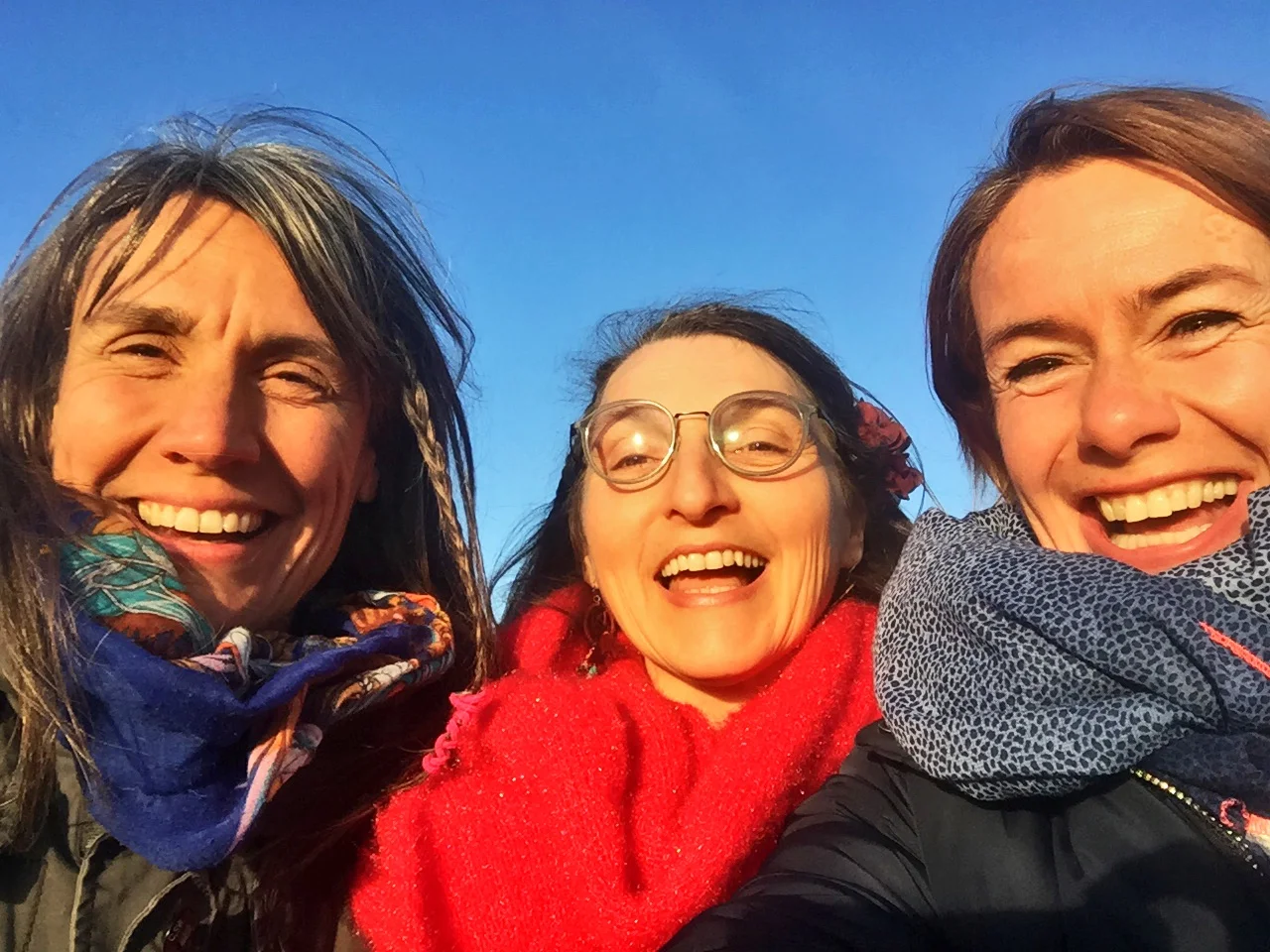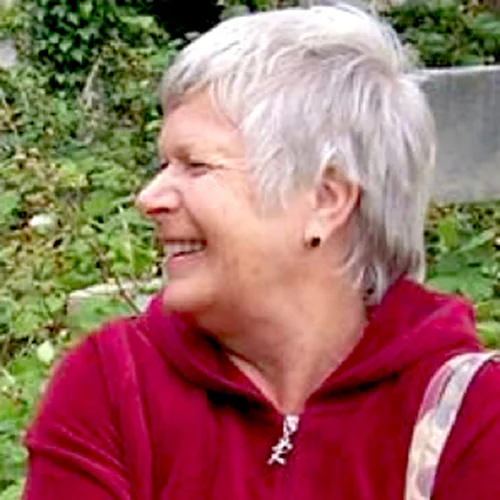
I have a disability that for most of my life has been pretty manageable.
It’s considered an “Invisible” disability because you can’t see it; I can pass as non-disabled. Between the beginning of my Open Floor Teacher Training and my graduation, my condition worsened and the way I moved and was able to show up for Open Floor work completely changed.
Open Floor, dance, and embodiment have been the foundation of my joy – and sanity! – for the last ten years of my life. I chose to become an Open Floor Teacher because I experienced how transformative and essential this work is in the world.
My journey to integrate chronic pain and fatigue in to my practice, and the subsequent challenge to finish my teacher training, has taught me a lot about making this amazing body of work more accessible to a diversity of bodies, learners and movers. It illuminated that our work needs to be able to meet more kinds of people where they are at.
I have been paying attention and getting creative about new ways to work with the curriculum outside the norm. I have been asking my teachers and colleagues to expand the possibilities (and inclusiveness of this work) for disabled persons, for neurodivergent people, those who experience chronic health conditions, and those limited in their movement and energy.
The following list of suggestions is a work in progress. It is informed by my amazing community of disabled friends and colleagues, my mentors and teachers at Open Floor, the insight and ideas of Jess Glenny (an autistic movement and Open Floor teacher with a specialism in hypermobility), and the examples set by Audrey Boss in her work with challenging weight-stigma and size discrimination.
My hope is that we all may continue to adapt our work and confront ableism, fat-phobia, allistic-privilege and inadvertent alienation (or exclusion) of different kinds of people, brains, bodies and abilities from our dance floors. Together we can collectively begin learning and changing any implicit biases about what healthy, dancing, moving, student bodies look like. I hope that this article can spark more conversation. Please, Join me and others in the Facebook Group Justice, Equity, Diversity and Inclusivity in Conscious Movement .
Tips for body-diversity and disability-inclusivity in Open Floor
A choice. “If you are willing to…” Encourage and support adaptations to your instructions.
Learn the Language of empowerment. Language is so powerful.
How you say it portrays how you think/perceive. Change the language, and you change the paradigm of “normal” and “other”.
Start here by learning what a lot of the words we use in this article mean
Speak to those who aren’t in the room.
Try this sometime: “If you use a wheelchair, you can do this exercise with us by…” even if no one in your class uses a wheelchair. These statements create an invitation and a powerful message: students using wheelchairs will be included in how I teach and I notice their absence.
Include prompts that normalize disability. If you are doing an exercise that involves looking at something, say: “For those of you who can’t see, can do this by…”
If your embodied anchor is “feet”, make sure you talk about feet in a way that includes ALL kinds of feet – even ones that don’t walk.
The more you add language and prompts that include diversity of bodies and abilities, the more inviting (and safer) your space becomes for such diversity to arrive.
“If you’re using a cane, chair or the wall for support…”
“If physical touch isn’t an option for you …”
I call this “speaking to the ghosts”, or “speaking to the empty seat”, invoking the presence of those who should, would, could, want to be there but have not yet arrived. This is a wonderful tool in all aspects of diversity and inclusivity work.
So, offer alternatives and modifications – always! Even if you don’t think anyone in the room needs them.
“I am going to ask each of you to move across the floor. If that’s not available to you, here is a row of chairs for you to do this, what I am looking for is …. See if you can explore that from the seated position,”
OR
“Here are some other options if moving across the floor isn’t accessible to your body …”
“You can do this from the floor, a chair, standing or with the support of the wall.”
“You can still do this exercise standing if you can’t get up/down off the floor easily for you.”
I find that if you tell people what you are looking for rather than how to do it, it creates more space and permission to explore with in the limitations of their own bodies.
Add this phrase often to your teaching…
“Take care of yourself and feel free to make this work for your body.” Jess Glenny, adds “I think it is good to remind students regularly that everything is optional”.
Question what you think of as a valid response to your suggestions, cues, and what you want to see happening in the room.
Remember not to judge others for how they move or explore. Validate (even if just internally) the courage it takes for someone to do what they need to do when the whole group is doing something else.
What happens when a student draws your attention to an implicit bias, accessibility oversight, ableist microaggressions, or alienating language?
If you don’t know what these words mean, your first step is to educate yourself. Here’s a great resource.
Is it wheelchair accessible?
How many stairs to enter the building?
In the USA we have the American Disabilities Association regulations – find out if your country has governing body that approves and monitors spaces for disabled community.
Reach out to organizations that do accessibility work in your country and get advice about venues. In the United States, Find ADA approved spaces, say so on your marketing materials.
Get out of your comfort zone.
Participate in movement classes or other activities designed for people of different abilities, ages and physical/mental capacities.
- Who’s not coming to your classes?
What can you understand about what they want and need to feel safe and included?
What kind of embodiment work are they showing up for? - Think about classes designed for seniors, people with disabilities, and those with neurodiversity. Look. Listen. Pay attention. What things are other teachers doing to accommodate and invite different abilities? I attend yoga and fitness classes for seniors or veterans. There is so much to learn from people teaching to other audiences. I recently attended an online movement class that was led by a fat-advocate for the fat* community. I learned a lot about language, cues and inclusivity just from paying attention to the choices other teachers make.
*The fat community has reclaimed the word “fat” as a self-empowered way to describe large bodies and fat bodies. More on that here.
Avoid language that normalizes “pushing through” or sets the expectation that it is wrong or bad to move slowly, rest or participate differently.
Give plenty of breaks for food, bathrooms, etc. Folks with limited physical abilities and disabilities need a little more time and space to take care of their bodies.
Workshops and trainings need to make space for people with disabilities to participate without burning out. It’s a lot to ask of some people with disabilities to do a 3-hour session without a break. Consider this when you plan long stretches of partner work. Give participants a clear way to “tag out” with their partners if they can’t do the exercise. Disabled folks live in a world that tells us over and over again that we are failing to “keep up”. And, we live in a cloud of disappointment and disapproval by others.
You can help normalize different needs by making it easier for us to take care of ourselves in your workshops, trainings and classes. We have learned to push and deny the limitations of our own bodies in order to feel included and not left out.
We – and all able-bodied people – need you, as a teacher and role model – to decolonize the classroom from the pervasive cultural idea that more, bigger, output, performing-well are “better” than listening to our own bodies.
Partnering can be one of the biggest challenges for people with sensitive movement needs, sensory needs or physical injuries. People with disabilities are always in a complex relationship with our bodies and our unique needs. Sometimes extending that in to connection with another person isn’t available or it is just too exhausting.
I like to offer student to choose to partner with the wall, a chair, or Spirit/God. I encourage them to really work in relationship to something outside themselves, but allow and encourage them to decline partnering. Anytime I ask students to take a partner, I tell them to feel free to place their hand over their heart if they aren’t available to partner with another person so the people in the room can see not to partner with them.
I would also discourage “partnering people up” without their consent.
Letting students choose their partners is part of allowing us to work with in our own wisdom of safety and trust. (And, yes, that doesn’t mean we don’t encourage people to stretch outside their comfort zones sometimes, too.)
Use them yourself – Not just when you are tired.
Show your students that they are a tool for expression. Learn to demo and move in your own dance in ways that model that the floor, the chairs, and the walls are support for expression.
Challenge yourself and your students to use them as a resource to help them inhabit their bodies more fully, not just to check-out, zone out, take a break or collapse (though all those are acceptable too!).
Put chairs in the center. Not at the walls.
Make sure they are wide and sturdy for larger or fat bodies, with no arms or closed sides.
Teaching a workshop or a training? Work with a Disabled Assistant.
Diverse leadership assures that more ability-diverse perspectives will be included. Make assisting more accessible to disabled and neurodiverse teachers.
Jess Glenny adds, “Invite disabled assistants and *Understand* that you may have to adapt your expectations of what an assistant does to meet your disabled assistant’s capacities. They may not be able to be ‘on’ for six hours but the different perspective they bring will more than make up for that.”
Remember to compensate them for their expertise in body-diversity and confronting ableism. Their knowledge and experience are invaluable. You will learn a lot from them. Be willing to receive and adapt.
If you can’t find a disabled assistant, have one assistant committed to normalizing and including disabled and diverse movement needs: by having awareness on “catching” able-bodied language/assumptions, and demoing all exercises with accessibility alternatives. Ask them to do their research in order to hold this role well.
Offer sliding-scale, scholarships, and discounts to people who are disabled or who’s physical abilities are more diverse than your current student body.
Offer escorts, chaperones, companions, and friends accompanying people with special needs come for free.
- People who struggle with health limitations often struggle to make ends meet financially. This is the intersectionality of capitalism (class oppression) and disability.
- Offering incentives through discounts is a huge step toward communicating that you actually really value their difference. It acknowledges the benefit you and other students get from having diversity in your community.
- Discounts can be a great gesture to acknowledge the unique challenges disabled people face in feeling invited, welcomed and belonging.
“For many autistic people, fluorescent lights, too loud music (I offer ear plugs and encourage noise blocking head phones), incense, etc., are not just a challenge, they can be a barrier to entry and an accessibility issue.” Jess Glenny
Consider offering a special class that accommodates a need for quiet, chill, gentle container.
We must acknowledge that OFI embodiment work has been shaped by, and is tailored to, able-bodied dancers.
To make our work accessible to those who are marginalized and alienated by current norms/culture of other forms of dance and embodiment, we must change how we teach and recognize who we are teaching for.
For more resources and information, you can view this public document compiled by Hester Hudig (OFI Marketing Circle Working Member)
If you want to check out more of Jess Glenny’s work, she has a number of articles about including autistic people on her blog.
You might want to start with “Autistic movers and shakers: some suggestions for supporting autistic people in yoga, dance and moving practice“: Jess has a specialism in working in movement with the hypermobility syndromes and has written articles and a book on the subject. You can find out more from her website.
Jess’s book “The Yoga Teacher Mentor” also includes a chapter on inclusivity that is transferrable to dance spaces.
Find out more about Audrey’s work with dismantling fat-stigma, body image and diet-culture.









